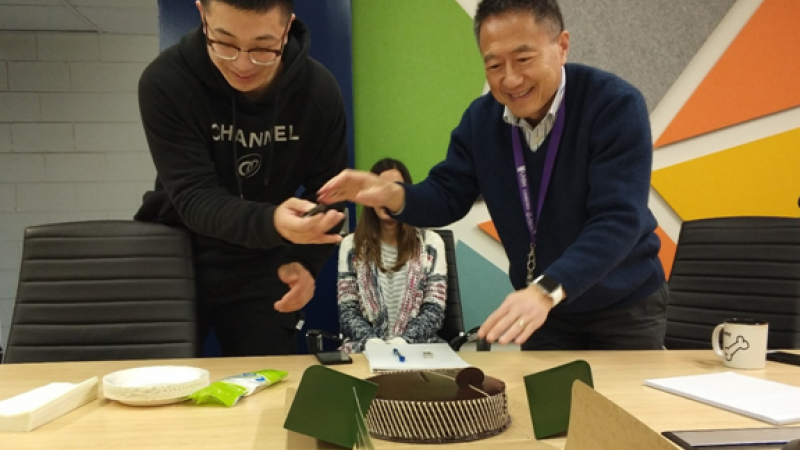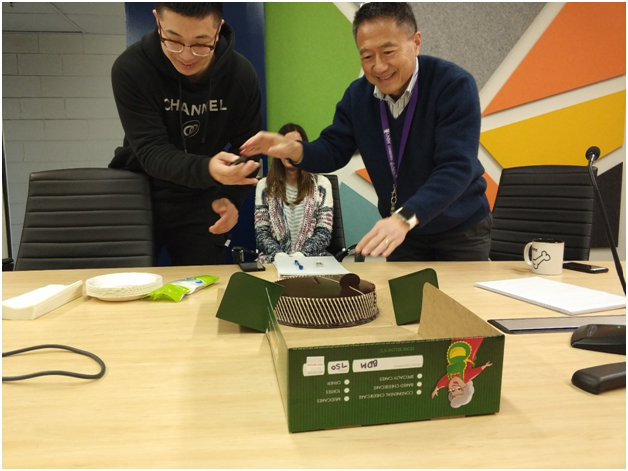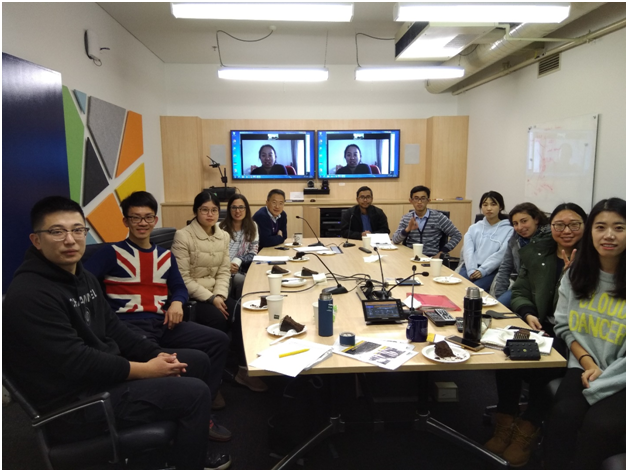Prof. Xiao Hua Wang has achieved his 100th paper milestone

On 19 June 2018, the Founding Director of the SARCCM and Director of International Student Recruitment and Exchange, Prof. Xiao Hua Wang has achieved his 100th paper milestone. Prof. Wang concerns the modelling of ocean circulation, sediment transport dynamics, and understanding coastal management issues and in the past 25 years, Prof. Wang has published 100 research papers on many high impact international journals, e.g., Reviews of Geophysics, Geophysical Research Letters, Journal of Physical Oceanography, Journal of Geophysical Research, Estuarine, Coastal and Shelf Science, Optics Express, Remote Sensing, Ocean Dynamics, American Journal of Environmental Sciences. Also, Prof. Wang is an Associate Editor for Estuarine, Coastal and Shelf Science (IF 2.32) and Limnology and Oceanography: Methods (IF 1.99).
Mr Yang Gang, a MPhil candidate and his primary supervisor Prof. Wang with their collaborators published their research paper on Remote Sensing (G. Yang, X.H. Wang, L. Ritchie-Tyo, L. Qiao, G. Li, Z. Cheng, 2018, Using 250-m surface reflectance MODIS Aqua/Terra product to estimate turbidity in a macro-tidal harbour: Darwin Harbour, Australia. Remote Sensing. In press). This paper entitled ‘Using 250-M Surface Reflectance MODIS Aqua/Terra Product to Estimate Turbidity in a Macro-Tidal Harbour: Darwin Harbour, Australia’ is Prof Wang’s 100th paper. Turbidity is an indicator of the quality of water and usually exhibits variability associated with changing hydrodynamic conditions, which can be reflected in the sediment dynamics in coastal regions. Darwin Harbour is a typical macro-tidal, well mixed, and complex environment influenced by industries, human activities, and natural factors—including winds, currents, river discharges, waves, and tides. As a case study, hydrodynamics and sediment dynamics in Darwin Harbour are investigated using moderate resolution imaging spectroradiometer (MODIS) measurements. This study focuses on understanding the variability of turbidity, mechanisms that control the variations of turbidity and analyzing field data to determine the main factors that influence the sediment dynamics in Darwin Harbour. The results of this study illustrate the seasonal turbidity variation is mainly influenced by the wind waves. The dredging campaigns in 2013 and 2014 wet seasons contributed to the rise of turbidity in Darwin Harbour. The action of tidal currents appears to be the dominant factor controlling the turbidity pattern in a spring–neap cycle and the turbidity intra-tidal variation. In addition, the turbidity maximum zone (TMZ) near Charles Point is formed by the tidal current convergence based on the results of current modelling.
On 20 June, SARCCM’s postdoc researcher and postgraduate students celebrated Prof. Wang’s 100th paper milestone.

Prof. Wang Xiao Hua and Mr. Yang Gang cut the cake to celebrate Prof. Wang’s 100th paper milestone.

Prof. Wang, the postdoc researcher, and postgraduate students of SARCCM celebrated Prof. Wang’s 100th paper milestone.

